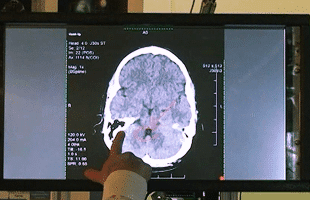Microsoft Develop 3D Display That Is Combined With Haptic Feedback
Peter Donnell / 11 years ago

3D technology has taken bit of a beating this last few months, the technology doesn’t seem to be getting picked up by the general consumer as quickly as many manufacturers had hoped and even the BBC have decided to pull away from making 3D content for the next three years, at least! Yet there are two areas that 3D technology is still gaining ground, the cinema and PC gaming, especially with the revolution that is forming for devices like the Oculus Rift. Yet all that considered, Microsoft have taken yet another approach to bringing us deeper in to the virtual world by creating a 3D display that also features haptic feedback.
By mounting a 3D display on a robotic arm, Mike Sinclair, Michel Pahud, and Hrvoje Benko of Microsoft Reasearch Redmond have been able to simulate motion, touch and interaction by allowing the screen to move and respond to light touches, giving the impression of moving the 3D objects, feeling forces and other haptic feedback sensations.
“I had been interested in the notion of putting a robot behind something you could touch. Originally, I had wanted a robot arm with many degrees of freedom. But complexity, costs, and safety issues narrowed down the options to one dimension of movement. At that point, I was sure that others must have already looked into this scenario, but after looking at the literature, it turned out no one had done this,” said Mr. Sinclair.
“Your finger is always aware of motion. As your finger pushes on the touchscreen and the senses merge with stereo vision, if we do the convergence correctly and update the visuals constantly so that they correspond to your finger’s depth perception, this is enough for your brain to accept the virtualworld as real,” said Mr. Pahud.
In effect it’s a parlor trick, your fooling yourself, but isn’t that more than enough? Being able to touch and manipulate objects in a way that looks real and feels real is pretty impressive for a 2D device that is only moving on it’s Z-axis, subtle movements and haptic feedback combined with 3D might not be the thing you next use in your 3D gaming, but well have to see how the technology develops to find out its real applications.
Thank you XbitLab for providing us with this information.
Image courtesy of Microsoft.



















